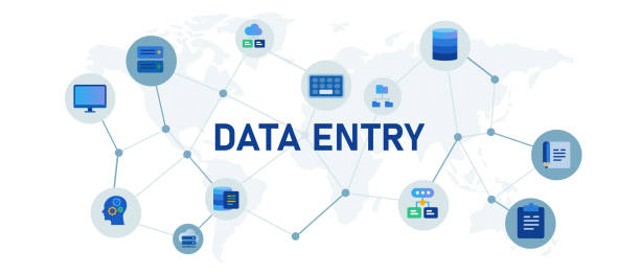Starting a career as a data analyst with experience might seem challenging, but it’s doable! There’s a significant demand for people who can work with data right now, so it’s a great time to begin. Whether you’re entirely new to data analysis or need help getting started, you’re in the right place.
In today’s business world, data is essential for making decisions. That’s why knowing how to analyze data is becoming increasingly valuable. You can find lots of resources out there to help you learn.
While wanting to become a data analyst, this will guide you through everything you need to know to become good at it. We’ll give you all the critical information and tips to succeed.
READ ALSO: How to Become a Software Developer: Full Guide 2024
Step-by-Step Guide to Become a Data Analyst 2024
Understanding the Data Analyst Role and Responsibilities
Before you begin your journey, knowing precisely what a Data Analyst does is essential. This means understanding their job, like how they look at data to help businesses work better.
Knowing what kinds of data they use, their industries, and how they solve problems will help you get started on the right track. This allows companies to make better choices about their future.
Learn the Necessary Skills for Data Analysis
To excel in data analysis, you must first master some basic skills. Begin by understanding the fundamental concepts that form the basis of data analysis, such as the data types and how they’re organized.
It’s essential to understand vital statistical principles like mean, median, and standard deviation and simple data cleaning methods to prepare your data for analysis. This initial knowledge lays a solid groundwork for developing more advanced analytical abilities.
Data analysts require a combination of technical and soft skills. Here are some key areas to focus on:
Essential Skills
- Statistics and Math: A good understanding of statistics and math is vital for effectively analyzing data.
- Programming Languages: Learning languages like Python and R is essential as they’re widely used for data manipulation and statistical analysis.
- Data Visualization and Reporting: Get familiar with tools like Tableau, Power BI, or Excel to create visual representations and reports to convey your findings.
- SQL and Databases: Knowing SQL is crucial for efficiently extracting and managing data from databases.
- Microsoft Excel: Excel is a valuable tool for fundamental data analysis. Master advanced formulas, pivot tables, and data visualization features to improve your analytical skills.
Work on a Project
Now that you’ve understood the technical skills, it’s time to apply them to real-life data situations. Go into personal projects or browse datasets on platforms like GitHub to practice what you’ve learned. Also, explore data analysis projects by ProjectPro to develop your skills further.
Working with actual data helps you tackle shared challenges such as cleaning, exploring, and understanding data. This hands-on experience enhances your problem-solving abilities and boosts your confidence in handling real-world situations, which is crucial for becoming a skilled Data Analyst.
Putting your skills to use in real-world problems is critical to gaining experience. You can start by analyzing public datasets, joining Kaggle competitions, or offering data analysis services to non-profits or small businesses.
Create a Data Analyst Portfolio
Your portfolio is like a projection for your skills and projects. Getting certifications can help you stand out in your job search.
Your portfolio is more important than your resume in this field. EntryLevel can assist you in getting a good portfolio that highlights what you can do. It’s a vital tool for finding a job because it shows potential employers what you can do.
A data analyst’s portfolio demonstrates your skills and experience in data analysis. New analysts need to show their work to employers. You can also include blog posts, articles, or presentations you’ve made. Put your portfolio on platforms like GitHub, LinkedIn, Medium, and Portfoliobox, or create your website.
Your portfolio should prove that you can find important information in data and that you’re good at using data analysis tools and methods.
Networking
Networking is often ignored but essential when becoming a data analyst. It’s a great way to find job opportunities, learn from experienced people, and make connections to help your career.
First, ensure you have an excellent online presence so people can easily find and connect with you. Then, join industry events, data meetups, and conferences. Connect with professionals on LinkedIn, and feel free to contact people you admire for chats or interviews. Networking helps find out about job openings that need to be advertised.
Preparing for the Data Analyst Job Market
Getting ready for a job as a data analyst involves some crucial steps. You’ll need to make a good resume, improve your interview skills, and use intelligent ways to find job openings.
Make sure your resume fits each job you apply for. Highlight the skills and experiences that matter most, and show how your work has made a difference. Remember to include links to your online portfolio to show off your projects and analyses.
Look for internships or junior roles to start your career and prove yourself.
During interviews, show you understand the company and the job you’re applying for. Be ready to answer questions and show how you solve problems. It’s essential to explain complex data concepts in simple ways.
Use your professional network to find jobs, go to industry events, and check job websites. Keep following up on your applications, and stay positive and determined. If you do all this, you’ll have a better chance of getting an excellent job in data analysis.
READ ALSO: How to Make Money Online as a Nurse: Full Guide
Roles of a Data Analyst
Data analysts are essential for handling data at every stage. Here’s what they do:
- Data Collection and Management: They gather data from various sources, ensuring it’s accurate and secure. This involves using different methods and managing databases.
- Data Cleaning and Preparation: They tidy up and organize data, fix mistakes, and prepare it for analysis. This includes sorting out missing info and duplicates.
- Data Analysis and Interpretation: Using statistics, they delve into data to uncover trends and patterns. Knowing statistics well is crucial for their work.
- Reporting and Visualization: They share their findings in reports and visual displays using tools like Tableau or Power BI. This makes it easier for others to understand complex data.
- Problem-Solving and Decision Support: By offering insights based on data, they assist organizations in making intelligent decisions. This involves grasping business objectives and tailoring their analyses to suit them.
Conclusion
Becoming a data analyst is an achievable goal, even without prior experience. Following the steps outlined in this guide, you can build a solid foundation of skills, gain practical experience, and effectively navigate the job market. From understanding the role of a data analyst to honing essential skills and crafting a standout portfolio, each step prepares you for success in this dynamic field.
Embrace networking opportunities, continuously refine your resume and interview skills, and remain persistent in your job search. You can embark on a rewarding career as a data analyst with hard work and determination.







